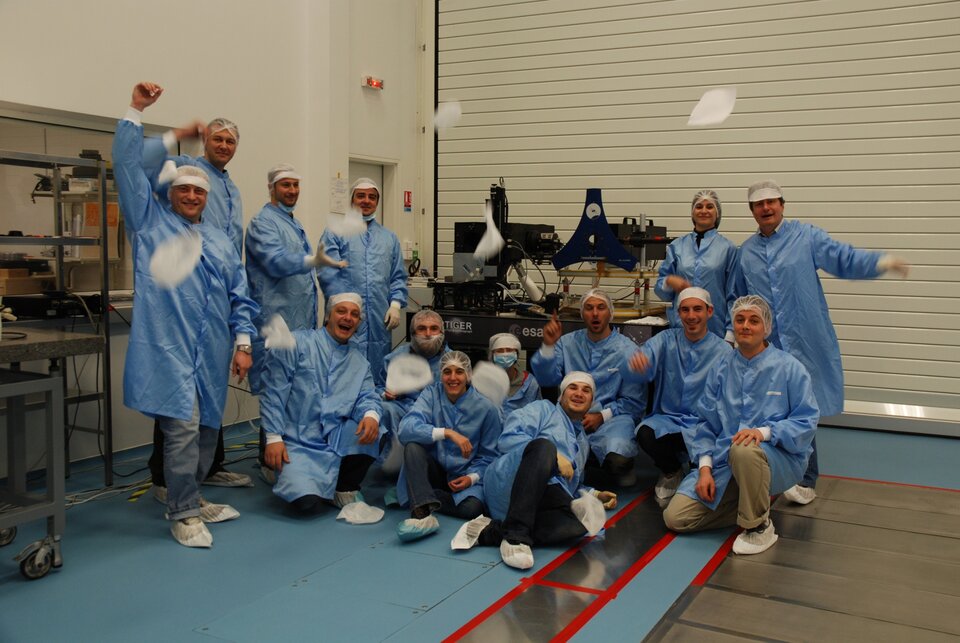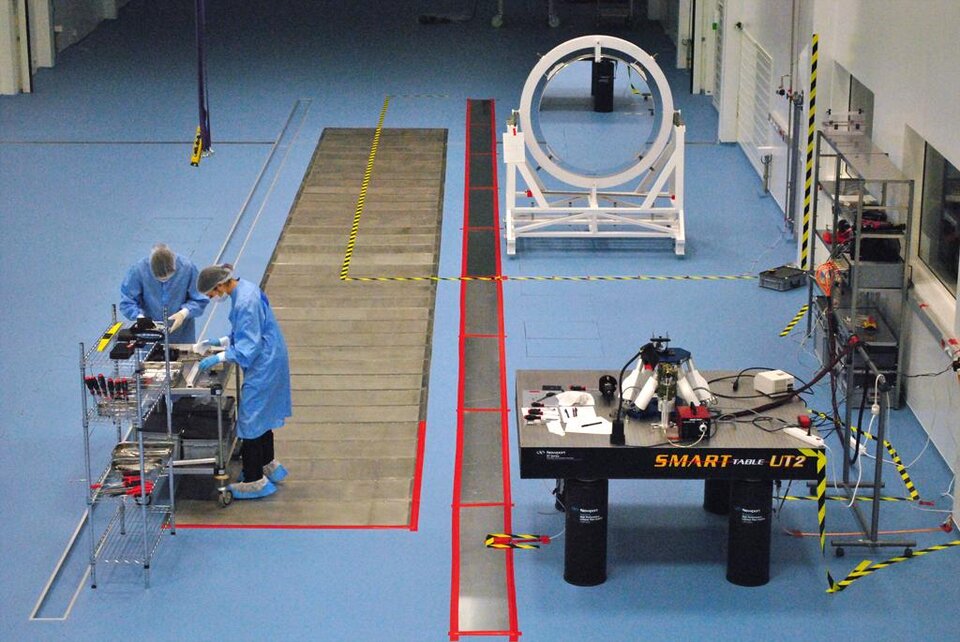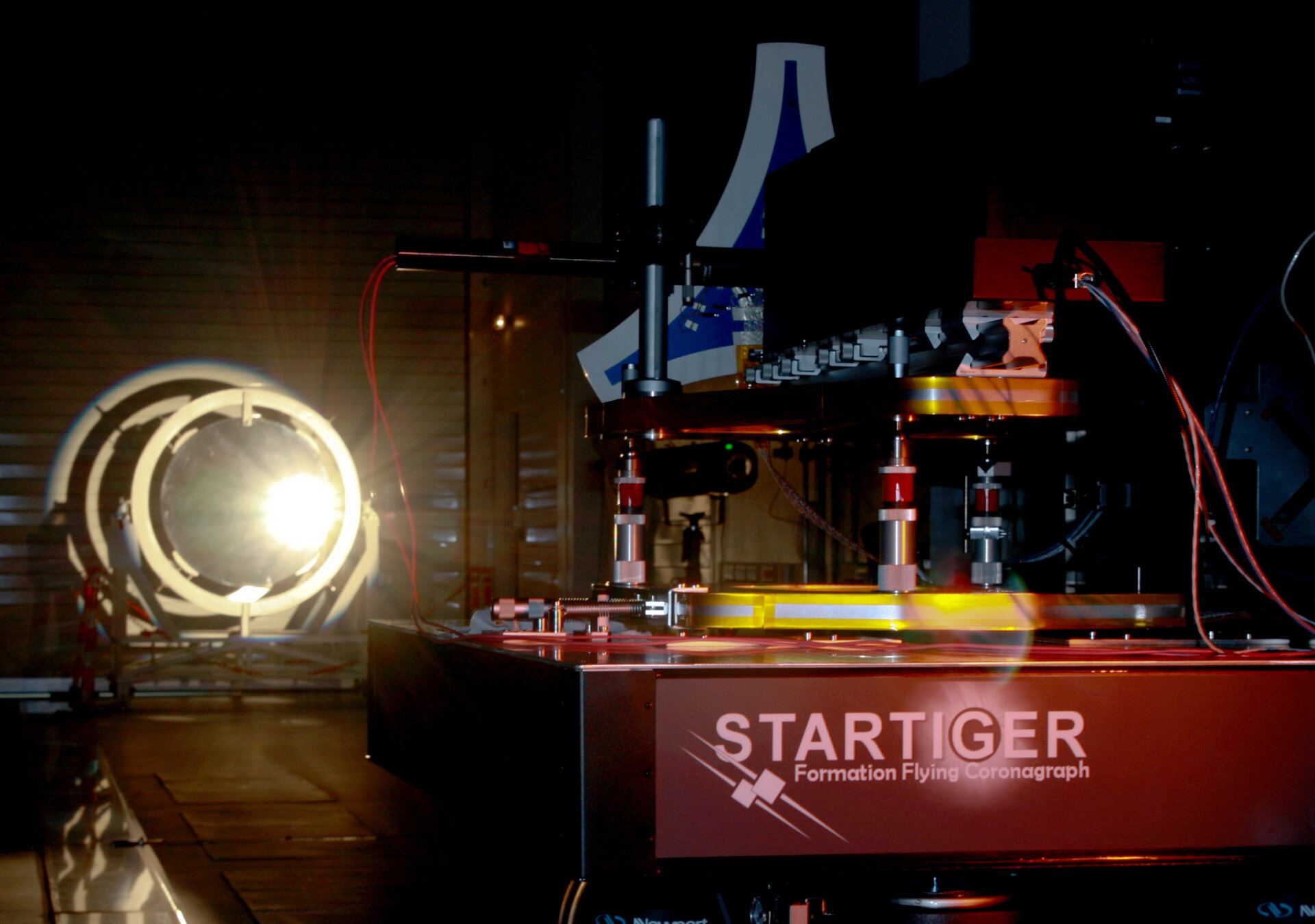StarTiger secures way to eclipse Sun in space
Last September a team of researchers assembled in southern France. Their six-month assignment: develop a new type of space mission, targeting a mysterious segment of the Sun normally hidden in plain sight.
Today the results of their race against the clock have been unveiled.
The Laboratoire Astrophysique d’Marseille (LAM) served as host to ESA’s latest StarTiger project, with the team building a scale-model prototype in a LAM cleanroom. The project's formal closedown took place today at ESA's ESTEC centre in the Netherlands.

The prototype demonstrates a way to produce a perpetual eclipse in space: fly two satellites in tight formation so that one casts a continuous shadow across the other.
Considering each satellite would be moving at multiple kilometres per second, the idea presents substantial problems in navigation and control terms. But success opens up the prospect of sustained access to inner zones of the Sun’s corona, currently glimpsed from the ground only for a few minutes per year during total solar eclipses.
Objective achieved
“ESA’s StarTiger is a new R&D approach, one that has paid off handsomely here,” commented Peter de Maagt, overseeing the StarTiger initiative.
“This integrated ‘breadboard’ demonstrator has been completed in just six months, including all necessary subsystems, mathematical models and software, to not only validate the external coronagraph concept but assess its performance in practical terms.”

“The main objective was achieved together with several secondary objectives,” said team leader Sebastien Vives of LAM, who oversaw seven core researchers, supported by a 20-strong support group. “The idea was to perform relative positioning between the two satellites and absolute positioning with respect to the Sun.
“Working face-to-face in the same room was our key to success, considering the schedule we faced. We combined our various competences to solve the many problems that arose along the way.”
Scale model of space mission

The two satellites will fly 150 m apart, the first hosting a ‘coronagraph’ instrument while the second, ‘occulter’, casts a shadow across it with a maximum positioning error of a few millimetres. Photosensors around the coronagraph will monitor the shadow’s position while an LED array on the occulter allows optical tracking from the observer satellite.
For the purposes of the scale-model, the simulated Sun, occulter and coronagraph were all on the same optic bench, with light reflected via a distant mirror to mimic the planned operating distance. This setup allowed complete end-to-end modelling of the proposed system.

The StarTiger coronagraph would perform spectral as well as spatial coronal monitoring, incorporating an innovative liquid-crystal-based spectrometer design and a ‘smart’ active pixel sensor (APS) detector covering the very wide dynamic range of coronal light levels. As part of the project’s secondary objectives, both elements were also prototyped.
Dominic Doyle of ESA’s Optics Laboratory explained: “These will help us reach a key science aim, being able to trace the movement of different high-temperature elements in the corona at the same time we’re monitoring its fine structure.”
StarTiger: shaking up R&D

“StarTiger, stands for ‘Space Technology Advancements by Resourceful, Targeted and Innovative Groups of Experts and Researchers,” explained Mr de Maagt.
“Traditionally, researchers work on multiple projects at once with widely dispersed collaborators. We gather a tight-knit team together for a fixed period of time to target a breakthrough.”
The pilot StarTiger project in 2002 resulted in a new teraHertz imager design which has since been spun-off into airport security. ESA plans up to two StarTiger projects per year over the next three years.
“The basic concept is to select a multi-disciplinary team of highly motivated scientists and engineers from several institutions and grant them priority access to state of the art equipment and facilities for a fixed, six-month, period of time,” explained Michel Courtois, ESA’s Director of Technical and Quality Management.
“The core team is co-located to minimise formal interfaces and foster the flow of information between them. Selecting the right team is crucial – as well as possessing essential technical expertise, they need to have the right balance of youthful enthusiasm and long-term experience to make success achievable.”










